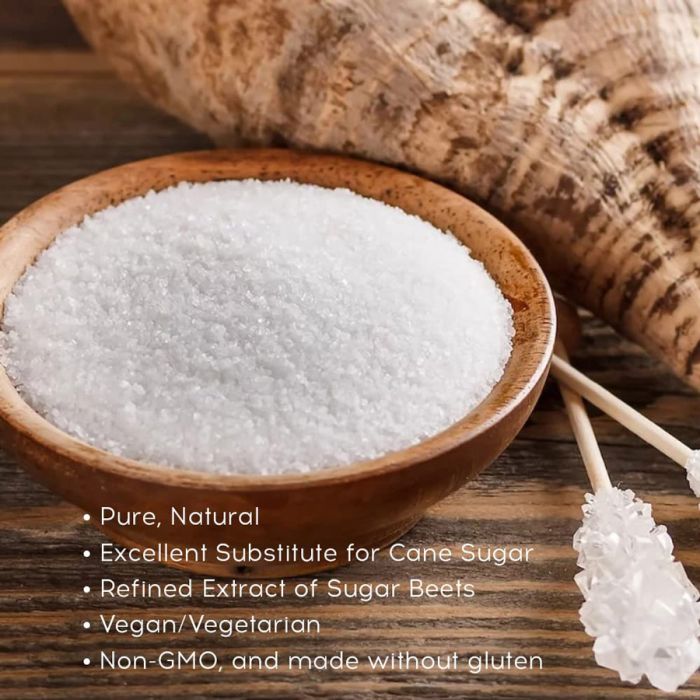Discovering the Distinctions in Uses and Advantages Between Beet Sugar Vs Cane Sugar
In the culinary globe, the choice in between beet sugar and cane sugar is not simply about sweet taste but entails a nuanced consideration of taste, application, and effect. While both sugars stem from various plants, each goes through one-of-a-kind manufacturing processes that discreetly influence their features and suitability for numerous meals. As cooks and customers progressively prioritize both the environmental and taste accounts of their ingredients, recognizing these differences comes to be important. This expedition uses understanding into how each sugar type can best enhance cooking creations.
Beginnings and Manufacturing Processes of Beet and Cane Sugar

Walking cane sugar, on the other hand, comes from the sugarcane plant, an exotic grass indigenous to Southeast Asia yet currently cultivated in tropical zones worldwide - beet sugar vs cane sugar. The production of cane sugar starts with the harvesting of cane stalks, which are crushed to release the juice.
Nutritional Content and Health And Wellness Considerations

When comparing the dietary content of beet sugar and cane sugar, it ends up being obvious that both types essentially provide the same caloric worths, with around 16 calories per teaspoon and no considerable nutrient diversity. Each is composed almost totally of sucrose, which is an easy carbohydrate that supplies fast energy however does not have vitamins, minerals, or fiber. This resemblance extends to their effect on wellness, especially concerning blood sugar degrees. Both sugars, when consumed over, can add to elevated blood sugar levels, a risk variable for diabetes mellitus and other metabolic problems. Extreme consumption can lead to weight gain and dental troubles, as both sugars are just as cariogenic, promoting tooth decay. From a health and wellness viewpoint, regulating consumption of any type of type of sugar, whether from beet or cane, is a good idea to stay clear of these potential unfavorable impacts on wellness. Therefore, neither holds a distinct benefit over the other in terms of health advantages.
Flavor Accounts and Culinary Applications
In spite of their similar chemical structures, beet sugar and cane sugar differ subtly in taste, which can influence their use in various cooking contexts. Cane sugar commonly carries a hint of molasses, even in its polished type, providing a cozy, caramel-like undertone that enhances baked products, coffee, and chocolate-based dishes. This mild molasses taste is specifically valued in the baking visit market for including depth to desserts and breads. On the other hand, beet sugar is identified by its extremely fine-tuned, neutral preference, making it a flexible sweetener that does not alter the taste profiles of dishes. This nonpartisanship is specifically beneficial in fragile recipes, such as light breads, lotions, and some sauces, where the intrinsic flavors of other components are meant to stand out. Cooks and food makers may select one kind of sugar over the various other based on the preferred taste result of their cooking creations.
Environmental Effect and Sustainability
While both beet and cane sugars are originated from plants, their environmental influences differ significantly because of the distinctive techniques of cultivation and processing required for each. Sugar beet growing frequently entails considerable automation, which can enhance nonrenewable fuel source intake and carbon discharges. However, beetroots can be grown in cooler environments and call for much less irrigation, potentially decreasing water usage contrasted to sugarcane. Sugarcane, on the other hand, is typically grown in exotic areas where it counts heavily on irrigation and a longer growing duration, boosting its water footprint.
Moreover, the handling of sugarcane often generates a considerable quantity of waste, consisting of bagasse, which, although useful as biofuel, frequently adds to air contamination if melted inefficiently. Sugar beet processing uses even more of the raw materials, resulting in less waste. Both sectors encounter obstacles in decreasing their ecological impacts, however recurring innovations in agricultural techniques and waste management are intending to boost sustainability.
Economic Elements Affecting the Sugar Sector
The economic dynamics of the sugar sector are considerably affected by international market needs and trade policies. Elements such as tolls, aids, and international trade contracts play critical duties in his response forming the competitive landscape. In areas where sugarcane or sugar beet production is subsidized, manufacturers may have a financial advantage that enables them to use reduced costs on the global market. This can produce differences in earnings and market access for producers in nations without such aids.
Furthermore, fluctuations in worldwide demand for sugar, influenced by dietary trends and commercial usage in foodstuff, straight influence prices and manufacturing degrees. beet sugar vs cane sugar. Weather problems also play an essential function, as they can significantly impact crop returns and, as a result, the supply chain. This variability presents a level of economic unpredictability that can result in financial investment volatility in sugar manufacturing industries, affecting decisions from growing this contact form to market strategy
Final Thought
In final thought, both beet and cane sugar have distinct high qualities that fit different culinary demands. While cane sugar imparts an abundant flavor suitable for enhancing baked goods, beet sugar's neutrality is perfect for lighter dishes.